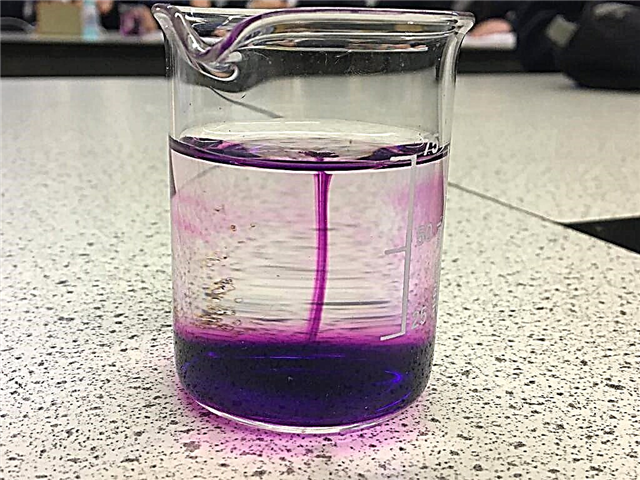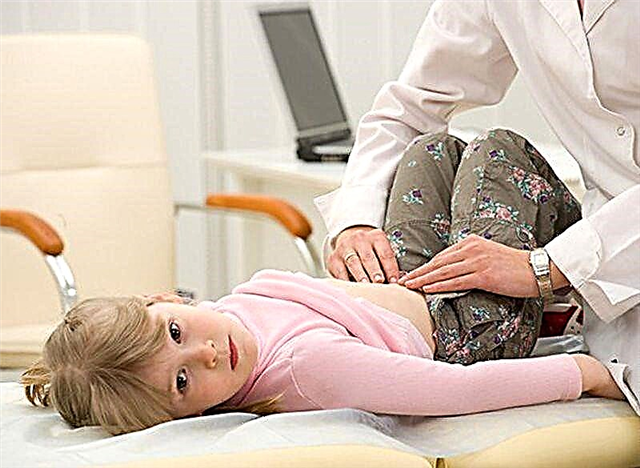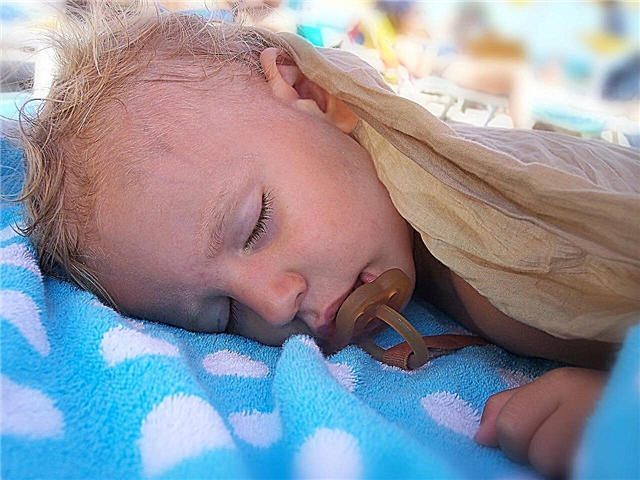Increased body temperature in a child on DPT
In the vaccination calendar, DPT vaccination is one of the dominant places. What kind of serious infections will she avoid? The four capital letters stand for: A - adsorbed, K - whooping cough, D - diphtheria, C - tetanus.
The pertussis component is represented by particles of killed pertussis pathogens, while the diphtheria and tetanus components are represented by toxoids, i.e. neutralized toxins secreted by these pathogens. All components are fixed on a special substance - aluminum hydroxide. From the name it is clear that the vaccine is designed to protect against infections dangerous for children.
A hyperthermic reaction (temperature over 38 degrees), according to statistics, after the introduction of this vaccine is observed in almost half of the children. Slightly more than 5% of babies respond to the vaccine with temperatures over 39 degrees. That is, in more than half of the cases, a temperature reaction is possible.
And if we add to this a slight deterioration in the general condition and local reactions in the form of edema, redness, pain at the injection site, it turns out that almost every baby can have a reaction to the vaccine. This is where all the myths and fears about DPT and, as a result, other vaccinations come from.

Which component of the vaccine causes the temperature to rise?
As mentioned above, the DPT vaccine contains fragments of the pertussis microbe and a substance based on diphtheria and tetanus toxins, the so-called toxoid.
Toxoids consist of protein components that are rendered harmless by formalin exposure and high temperature. Thanks to this treatment, they lose their ability to cause disease. And they retain the ability to force the body to develop protection against the real toxins of diphtheria and tetanus microbes.
The pertussis component of the vaccine is more complicated. It contains fragments of the cell wall of the microbe - lipopolysaccharides. These are molecules made of carbohydrates and fats. These include pertactin. It is needed by the whooping cough microbe to fix on the epithelial cells of the respiratory tract: nasopharynx, larynx, trachea, bronchi. It is with the presence of pertactin in the DPT vaccine that the reaction in the form of an increase in temperature is associated.
The DPT vaccine also includes whooping cough toxoid, as well as the so-called filamentized hemaglutinin. It prevents pertussis bacteria from adhering to the mucous membranes of the respiratory tract, that is, it provides local immunity.
Features of the reactivity of the child's body
The formation of the baby's immune system begins in the prenatal period. After birth, it will be partially protected by antibodies passed on by the mother. Despite this, the child is in a state of temporary immunodeficiency. By the age of 3-6 months, the mother's antibodies begin to break down, and the baby's immune system has not yet learned to develop its defense. This is exactly what happens with antibodies to whooping cough, diphtheria and tetanus. This is why the first DPT vaccine is given at the age of 3 months.
In response to the vaccine, the child's body begins to actively produce antibodies. If, after vaccination, the baby is faced with a dangerous infection: diphtheria, whooping cough or tetanus, they will protect against the development of the disease, or the disease will be mild.
At the age of 3 months, the baby's immune system reacts to infections differently from older children. Therefore, the symptoms of diseases will be dim: lethargy, malaise, refusal to eat. The temperature does not always rise. Therefore, after the first DPT vaccination, the temperature does not always happen.
But over time, the level of protective antibodies in the baby's blood will decrease. They deteriorate and are recycled. The child is again defenseless against dangerous infections. Therefore, after a certain time, repeated doses of the DPT vaccine are administered. They provide a stronger immune response.
A temperature reaction is more often observed on repeated DPT vaccinations, which is associated with a certain maturation of the child's immune system. An increase in temperature indicates that it has reacted to the introduction and the production of protective antibodies has begun.
For reliable protection, it is necessary to inject the DPT vaccine 3 times in the first year of life with an interval of 1.5 months: at 3 months, and then at 4.5 and 6 months. With each injection, more antibodies are produced. After the last injection, they persist until the age of one and a half years. At this time, the first revaccination is carried out.
Does the temperature rise in adults on DPT?
The second revaccination for children is carried out at the age of 6 years. But the ADS-M vaccine is already being used for it. It contains only diphtheria and tetanus toxoids in smaller quantities than in the DPT vaccine and does not contain the pertussis component. Then, subsequent revaccinations for adolescents and adults are given every 10 years also with the ADS-M vaccine.
The DPT vaccine in children over 4 years old and in adults is not used, since the frequency of side effects and strong reactions to its administration is high, and whooping cough is no longer so dangerous for them. After the introduction of ADS-M, pain in the upper limb and its swelling are possible. Very rarely, there may be malaise and fever.
Abroad, it is customary to vaccinate adults against whooping cough, but a vaccine is used that does not contain fragments of the cell wall of the microbe. It is easily tolerated; temperature reactions are very rare. It is believed that this tactic helps to protect newborn babies from the environment. Unfortunately, in Russia, the practice of vaccination against pertussis in adults is not used.
Is it possible to avoid the temperature rise?
Caring parents ask themselves this question before each vaccination. Is it necessary to avoid it at all, if it is believed that it is with an increase in temperature that antibodies to dangerous infections will be produced more intensively and better. A temperature reaction can occur after any vaccination has been given. It cannot be predicted. If we are talking about DTP, then the likelihood of its occurrence is higher if the baby goes to the second and subsequent vaccinations.
Preparing for DTP vaccination

No special measures are required to prepare for the DTP vaccine, like any other. In order to reduce the risk of adverse reactions and complications, the baby must be completely healthy by the time the vaccine is given. All chronic diseases should be in remission, that is, without exacerbation. Immediately before vaccination, the child should be examined by a doctor, and the body temperature should be measured.
A few days before vaccination, all new and unfamiliar products are excluded from the baby's menu. You do not need to adhere to a strict diet, but you should also not include exotic and suspicious foods in terms of allergies.
About a week before vaccination, it is worth protecting the child from unnecessary contacts, especially during the period of the rise in the incidence of acute respiratory viral infections. It is possible that the first manifestation of the disease will coincide with the day of the vaccination. Then it will be difficult to understand what caused the rise in temperature, and the vaccination can be unfairly blamed for the baby's illness.
Do not give medications to a healthy child before vaccination. Currently, there are no drugs that can alleviate the condition after vaccination. If the baby suffers from any chronic disease, it is possible that the attending physician will prescribe a course of drugs in order to transfer the post-vaccination period as easily as possible and not cause an exacerbation of the disease.
Parental actions after vaccination
During the first 30 minutes after the vaccination, the child should be under medical supervision, because during this period, severe allergic reactions to the drug and its components develop. Such a dangerous situation can occur even if the baby is re-vaccinated. Therefore, you do not need to go home right away, you should stay near the vaccination room, but, at the same time, avoid contact with sick children who are in the clinic.
At home you need to watch the baby. There is no need to measure the temperature every hour. You can do this before bed, or if the child's health worsens.
You should not immediately after vaccination and in the next 2-3 days take the child to visit, children's groups and to those places where there is a risk of contracting a respiratory viral infection. The child's immune system is doing an important job: it develops protection after vaccination and does not need to be overloaded.
Contrary to popular belief, after vaccination, you can walk and swim, of course, if the child's well-being allows.
What medications can be used to lower the temperature? Dosage
If, nevertheless, after the vaccination, the baby's temperature rises, you need to focus more not on the numbers on the thermometer, but on his well-being. The temperature must be reduced above 38.5 degrees. If, at 38 degrees, the child behaves as usual, you need to observe him and not rush to give medicine. If the thermometer is 37.1, but at the same time there is lethargy, moodiness, other disorders of health, you may need an antipyretic drug.
In children of any age, in the event of a rise in temperature, only 2 drugs can be taken: paracetamol and ibuprofen. There are several forms of their release: suspensions, suppositories or tablets.
Paracetamol, aka Panadol, Calpol, Tsefekon, when the temperature rises, is taken in a single dose of 10 mg / kg. Ibuprofen (Ibufen, Nurofen) - at a dose of 5 mg / kg. The daily dose of paracetamol should not exceed more than 60 mg / kg, and ibuprofen - more than 20 mg / kg. Both drugs can be used for pain relief, that is, in cases where the baby's temperature remains within normal limits, but there are signs of pain. In such cases, the child will be overly capricious, crying, the movement of the sore limb will be limited.

Is a rise in temperature for a DPT vaccination considered normal?
The reaction of the child's body to the introduction of DPT in the form of an increase in temperature is not considered a side effect. Rather, it is a typical response of systems to interaction with foreign components. An increase in temperature to the DPT vaccine is not considered a complication or even a side effect, but a typical general reaction of the body to its administration. This is stated in the instructions for the drug.
This reaction is due to the fact that the immune system begins to work actively, producing protective antibodies. As you know, their formation is more intensive at temperatures above 37 degrees. Therefore, an increase in temperature in response to the introduction of the vaccine, fluctuating between 38-39 degrees, should not be considered a crime.
You should know that a reaction is considered hyperergic when the temperature rises above 40 degrees. Subsequent vaccination with the same vaccine will be contraindicated.
How long can the temperature last after DPT?
Most often, the rise in temperature for the introduction of DPT occurs by the end of the first day and lasts 1 - 2 days. Sometimes it appears on the second day and also lasts for 48 hours.
If the temperature after DPT vaccination increased for 3 and the next days, then it is no longer associated with it. It is more likely that the baby is sick. The infection occurred before the vaccination, or on the day of its setting. In this case, the doctor, upon examination, simply could not see the symptoms of the disease, since they did not have time to develop.
Other possible reactions (complications) to the vaccine
Most often, any change in the baby's condition after vaccination is considered by parents as a serious health problem. But one should distinguish between reactions typical of a vaccine and true complications that lead to permanent damage to the child's health.
Frequent reactions
In addition to hyperthermia, frequent reactions that develop after the administration of DPT include:
- Edema, the appearance of a seal, a reddened area at the injection site up to 8 mm in diameter. Such reactions are observed in 50% of children vaccinated with DPT.
- Malaise, irritation, weakness, loss of appetite can be observed in 60% of those vaccinated.
Rare reactions
- Shrill crying. This is a constant, continuous screeching, screaming for 3 or more hours. This is how he differs from ordinary crying. Currently, the connection between crying and increased intracranial pressure has not been proven. It is most likely due to a nerve injury or pain at the injection site.
- Sudden muscle weakness - hypotension, then a sharp pallor and lack of response to all external stimuli. This is the so-called collaptoid or hypotensive-hyporesponsive reaction. It lasts from a few minutes to 48 hours and goes away without consequences for the baby.
- Convulsions after vaccination. Most often they are associated with an increase in temperature. If seizures occur against a background of normal temperature, then they are the debut of epilepsy, not associated with vaccination.
- Encephalitic reactions include seizures, impaired consciousness and behavior that last more than 6 hours. They pass without a trace and do not leave any consequences for the health of the baby.
- Anaphylactic shock... This is an acute allergic reaction that occurs within the first 30 minutes after the vaccine is given. It is manifested by a sharp pallor, impaired consciousness and breathing, a sharp decrease in blood pressure.
- Abscesses and suppuration at the injection site. Associated with improper vaccine administration technique.

Contraindications for vaccination
If the baby is observed by a neurologist with a disease that progresses and does not enter the stage of remission, or in the past he had convulsions without fever, then this is a contraindication for DPT vaccination. You cannot administer the vaccine to those children who reacted to the previous vaccination with an increase in temperature to 40 degrees or more, or there was a seal more than 8 mm in diameter at the injection site.
You cannot vaccinate a child with DTP even if he has developed anaphylactic shock on the previous dose.
If the child is sick for the period of routine vaccination, then this is a relative contraindication and can be vaccinated after recovery.
Does the response depend on the vaccine manufacturer?
It is believed that imported vaccines are more easily tolerated by a child than domestic ones. The thing is that all DPT vaccines are divided into two- and three-component. The former contain only whooping cough toxoid and filamentary hemagglutinin. The vaccine "Pentaxim" is supplied to Russia from France. It has the composition described above.
In addition to diphtheria, whooping cough and tetanus, Pentaxim protects against polio and hemophilic infections. Temperature reactions during its setting are minimized, since the vaccine is purified from proteins of the cell membrane of pertussis bacteria, which lead to an increase in temperature.
In addition to toxoid and hemagglutinin, three-component vaccines also contain pertactin, a membrane protein of pertussis bacteria. These include whole-cell vaccines DPT and Bubo-kok (also a vaccine against hepatitis B) produced in Russia, as well as the Belgian Infanrix and Infanrix Hexa (protects the baby from diphtheria, pertussis, tetanus, polio, hemophilus influenzae and hepatitis B ). In the latter, there is less pertactin. They are cleared of other fragments of the microbial cell, therefore, like Pentaxim, they are tolerated with a minimum of side effects and reactions.

Tips for parents
The most important thing before vaccination is the calmness of the parents.There is no need to panic, because the purpose of vaccination is to protect the baby from dangerous infections.
It is important to inform the doctor before the examination about all deviations in the child's health. After all, mom and dad watch their baby every day and can notice important little things that cannot be seen during a single examination. There is no need to subject a healthy baby to various analyzes and examinations before vaccination. To protect your child from unnecessary injections and minimize the risk of unpleasant reactions, you can purchase an imported vaccine in consultation with your doctor. Thus, in one injection, the baby will receive protection from several infections at once.
After vaccination, observation is very important in order to give an antipyretic drug in time and prevent the development of febrile seizures.
And most importantly - don't panic!
Conclusion
Unfortunately, the infections against which the DPT vaccine protects are relevant to this day. You should not reject it, focusing only on rumors and arguments of the anti-vaccination movement. Modern medicine does not aim to harm the baby. And the consequences of refusal to vaccinate can be much worse than 2 days of a rise in temperature.



